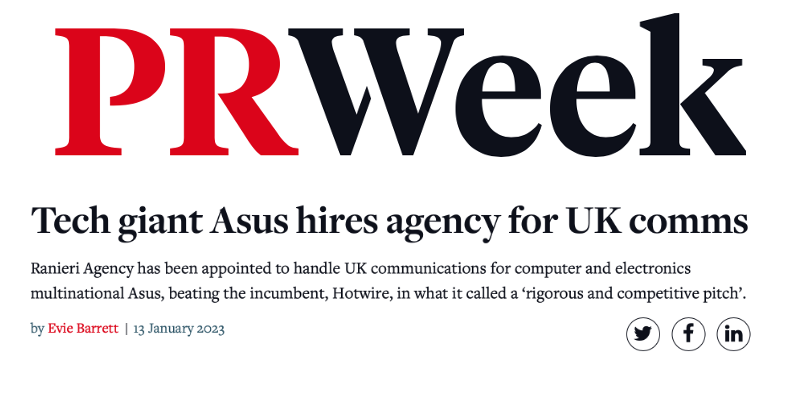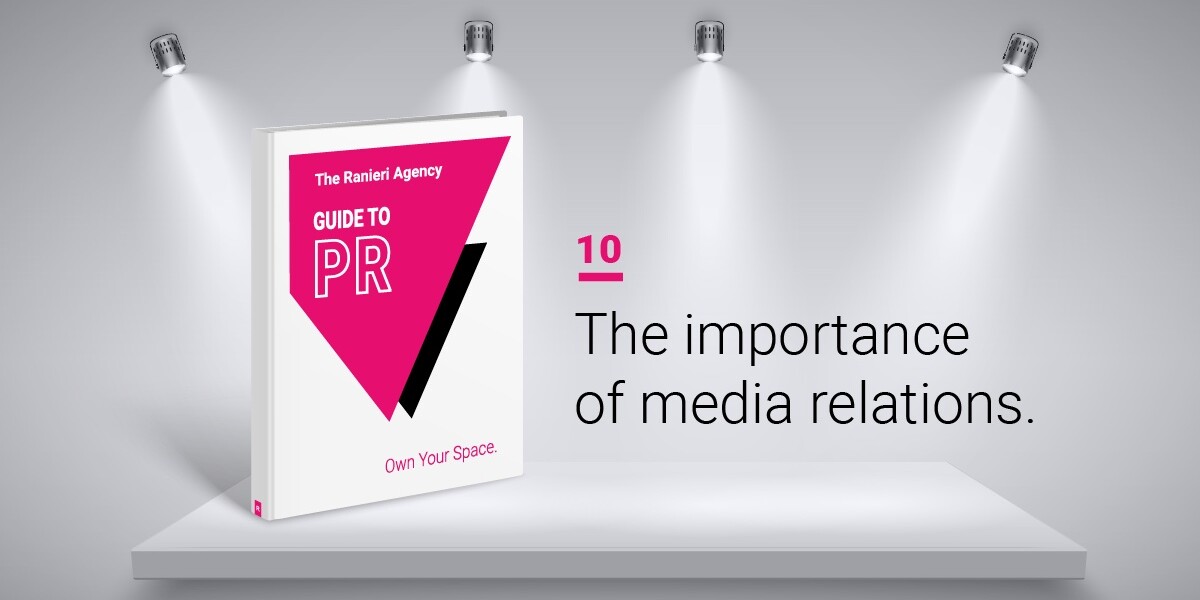As the online landscape continues to change, achieving greater sales can be more challenging than ever. With the drive to attract and retain consumers becoming more competitive, PR firms are working harder than ever to strengthen the relationship of companies with their consumers.
Being visible in a competitive market is all very well, but without strong strategies and creative campaigns, converting potential consumers to loyal customers is unlikely. Using integrated, media savvy PR campaigns can make a tangible difference to your sales, bringing results and rewards to all parties: you, your brand and your customers.
We are often asked by our consumer tech clients if PR can drive sales? As part of our Guide to PR, we have put together our top 5 communications strategies to support sales and growth.
- Know your audience
Part of a good PR campaign is first understanding who your target audience is, only then will you be able to find out where the comms opportunity actually lies. Find out about their tastes and preferences; where they spend time online, what they read, how they take in information and where they are most likely to respond to you. With genuine research, usable data and a well thought out strategy, however, you can maximize your exposure among your actual audience.
It is also important to understand that you have a naturally evolving audience and where they spend their time today, may not be where they spend their time tomorrow. The pandemic has changed social media dramatically and brands have had to re-think their strategies – starting with unravelling a whole new host of audience data. Even brands such a fitness and consumer tech that experienced huge spikes in sales over lockdown periods must be prepared to challenge previous insights.
- Build your brand & build your bottom line
Let’s be honest, building a brand in a competitive marketplace is not easy. But it’s not impossible, either. In an image obsessed world, where a picture can go viral in minutes and posts can be read by millions in a day, getting across who you, as well as what you are, is critical if you are looking to sell more.
From your company logo to your corporate image, connecting with your target audience is a major part of brand awareness and a key component of improved sales. Clarity is also critical when making this connection, especially in a world where information is so readily available and the competition for brand loyalty is so fierce.
From a PR perspective, crafting a carefully considered image is the springboard to success and knowing who your audience is, and what they are likely to warm to, is a seminal part of this process. Brand building is about more than just your logo, it is about credibility, honesty and reliability. If your image is built on these foundations, PR campaigns are sure to help your brand stand out in even the most crowded marketplace.
- Reputation matters
Strong sales can be a result of many things. Innovative marketing campaigns, brand awareness in the marketplace and of course, strong leadership in your sales department. It can also be a result of a strong reputation, something which can take a long time to build, but only moments to destroy.
That’s why it is imperative to manage and control your online reputation, avoid a crisis and always be ready to answer, diffuse and remove undeserved criticism about you or your brand. If a bad review is posted without a reply or left to garner more attention that it warrants, then this single negative review can quickly overshadow hundreds of glowing references.
With consumers’ ability to write instant reviews on your site, offer consumer reviews on third party sites, send our tweets or posts about your brand, staying aware of what people are saying and responding appropriately is critical.
In the current climate, reputation matters more than some appreciate and protecting, as well as enhancing yours is important for your bottom line. As any good comms company will advise you, reputation management can be an important a part of any campaign.
- Embrace social media
Social Media is a critical element of a strong communications campaign. Facebook, Twitter, Instagram, Tik Tok…the list of instant media options is long and the potential is limitless.
Whatever your brand, whatever your product, creating compelling social media content can lead to a loyal fan base and burgeoning sales.
Integrated marketing campaigns are simply not complete without utilising the power of social media and using it to the full is always the best option. Integrated strategies allow PR campaigns to reach audiences and drive sales more successfully than ever.
Being innovative and creative is key, especially as the digital landscape changes rapidly and attention spans continue to shorten. You don’t have long to grab someone’s attention, but when you do, keeping it is just the start of what can be a profitable relationship.
The rise of social e-commerce over the past couple of years has been a game changer for many brands, allowing them to compete in an already crowded marketplace. Most importantly, social commerce goes hand in hand with influencer partnerships. From “discovery” to “purchase”, brands can leverage influencers to provide a trustful and streamlined customer experience. Read more about the rise of social e-commerce here
- Content & SEO
Writing blogs or features may sound simple enough but getting the content right can be challenging. It’s always good to remember that anything and everything you write doesn’t just reflect your company, it shows what you know, who you are and how you operate. Where your website is important to introduce who you are and what you offer, a well written, on-point and industry savvy blog can tell them much more about you.
As a PR strategy, a great piece of content can help connect you with your audience on a more personal level. Writing in a way that shows your human face in a corporate world is likely to engage the reader and engender a loyal following.
With content, you can engage, entertain and educate as well as offering a conversational insight your company’s character, while forging a meaningful and lasting relationship with your audience. Regular content streams also show that you have your finger on the industry pulse, keeping you relevant and your customers informed.


